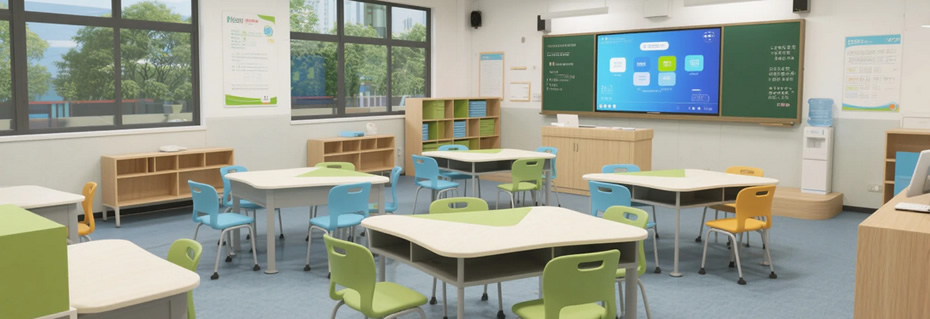In modern educational settings, the layout of classroom furniture plays a crucial role in enhancing the learning experience. Smart classrooms, equipped with advanced technology and flexible design, require careful consideration of furniture arrangement to support diverse teaching and learning activities. Here are the key principles and common layout options for classroom furniture in smart classrooms.

I. Design Principles
Flexibility
The furniture should be easily reconfigurable to adapt to various teaching modes, such as lecture-based, group discussion, or interactive sessions. For example, desks and chairs that can rotate or connect seamlessly allow for quick transitions from individual to group settings.
Functionality
Each piece of furniture should serve a clear purpose without redundancy, meeting the needs of different teaching activities. Desks with built-in storage compartments and chairs with casters for easy movement are practical examples.
Interactivity
The layout should encourage interaction among students and between students and teachers. Group discussion layouts, for instance, facilitate communication and collaboration.
Comfort
Furniture should be ergonomically designed to ensure comfort during extended periods of use. This includes adjustable heights for desks and chairs to accommodate different student heights.
Modular Design
Using modular furniture allows each piece to function independently or combine with others to form larger functional units. This flexibility is essential for adapting to various teaching scenarios.
II. Common Layout Options
Traditional Lecture Layout
This is the classic arrangement, with desks and chairs aligned in rows facing the front of the classroom. It is suitable for traditional teaching activities.
U-Shaped Focus Layout
Arranging desks and chairs in a U-shape draws students’ attention to the teacher’s position. This layout is ideal for in-depth teaching sessions or individual presentations.
Group Discussion Layout
Students are seated in small groups, facilitating collaborative learning and group competitions. This layout encourages interaction and teamwork.
Interactive Debate Layout
Students are divided into two facing groups, suitable for debates or other interactive activities.
Arc-Shaped Focus Layout
Similar to the U-shaped layout, this arrangement uses an arc to focus students’ attention on the teacher. It is effective for in-depth teaching or individual presentations.
Petal-Shaped Radiating Layout
This layout, resembling flower petals, is ideal for immersive lectures and can enhance students’ focus and engagement.
Hexagonal Honeycomb Matrix
This layout, with desks arranged in a hexagonal pattern, is perfect for brainstorming sessions and can boost creativity.
III. Implementation Tips
Choose Appropriate Furniture
Select desks and chairs that are height-adjustable, mobile, and multifunctional. Desks with built-in storage and chairs with casters are highly recommended.
Allow for Movement
Ensure there is ample space for students and teachers to move around comfortably. This is especially important during transitions between different activities.
Utilize Modular Design
With modular furniture, you can easily combine desks and chairs to create different functional areas within the classroom.
Consider Teaching Modes
Tailor the furniture layout to the specific teaching mode. For example, use a group discussion layout for collaborative activities.
Provide Teacher Guidelines
Teachers should be able to adjust the furniture layout in advance based on the lesson plan. The flexibility of the furniture allows for more interactive opportunities.